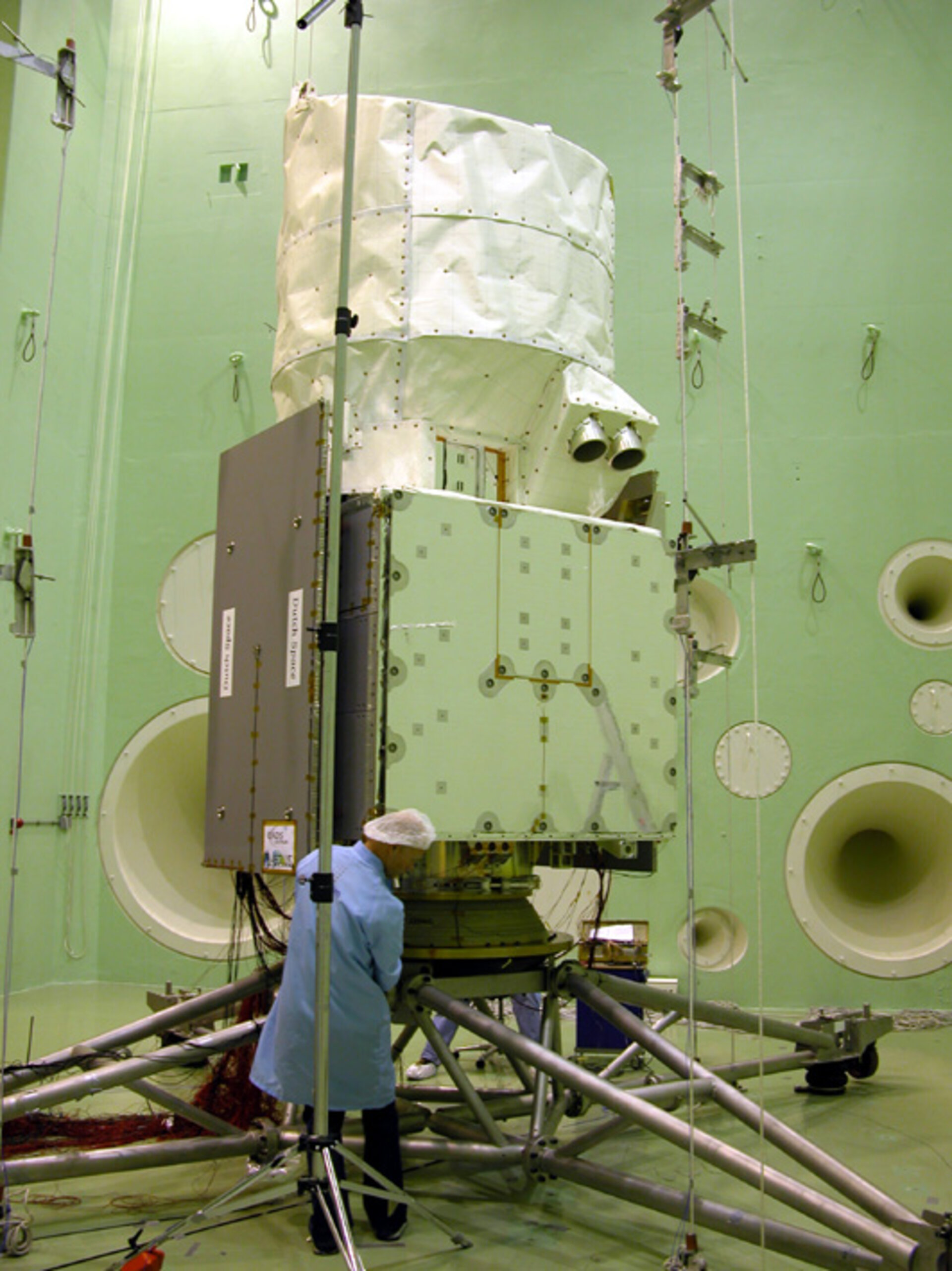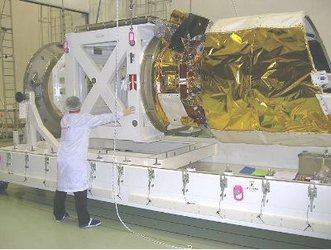ADM-Aeolus testing successfully completed
A significant milestone in ESA's wind mission ADM-Aeolus has just been reached with the successful completion of a series of crucial mechanical tests. These tests, which took place at ESA-ESTEC in the Netherlands, have demonstrated clearly that the satellite structure and the ALADIN payload will be able to withstand the harsh conditions of launch.
The first of the tests was dedicated to acoustics and took place in the Large European Acoustic Facility (LEAF). Here, the satellite structure was exposed to the extreme noise levels that are expected during launch. Within the test chamber, sound pressure is created, which actually exceeds the sound pressure felt by the satellite during launch. The noise from the launcher, in fact, forms a major structural load for any satellite, and the demonstration that the structure can withstand this is an important milestone.
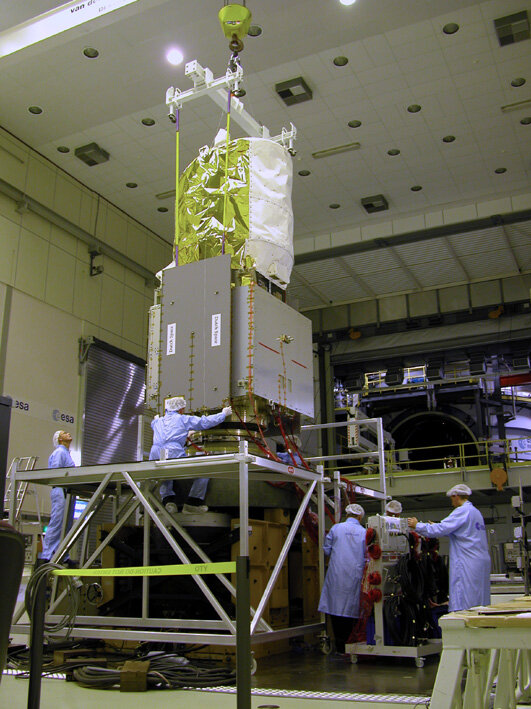
The following test sequences were performed on a large shaker, on which the Aeolus structural model was mounted. The shaker moves the whole satellite in controlled amplitudes and frequencies, thus simulating the loads during launch. The final tests simulated the shock that the spacecraft encounters when it separates from the launcher. For this test, Aeolus is connected to the mounting adaptor of the launcher, and the explosives that trigger the separation are fired.
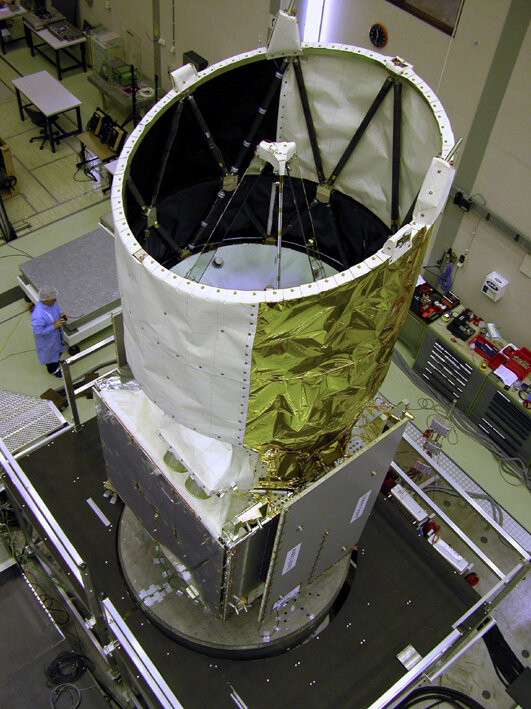
All the tests were performed on the structural model of the Aeolus satellite. This is the complete flight structure of the satellite, but all the subsystems are represented by boxes of the same size and mass as the real subsystems but are not functional. For the ALADIN payload, the structure and the receiving telescope are identical in design as the flight hardware, but the optical and electronic subsystems are represented by dummy masses. However, the instrument also carries the full hardware for thermal control, which had already undergone extensive thermal testing in April.
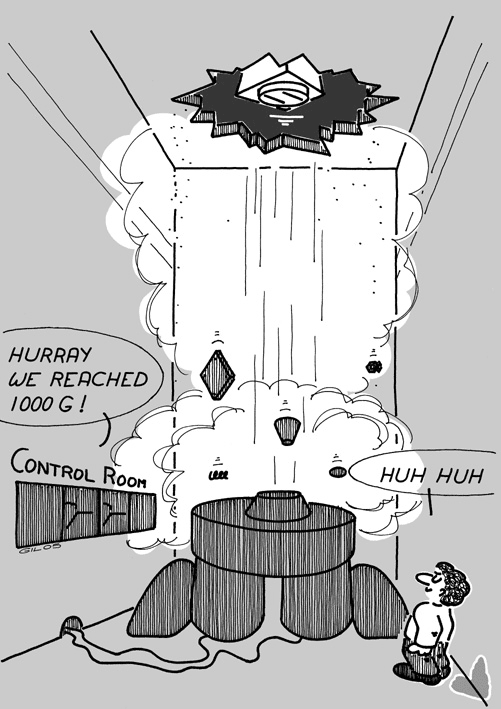
For the Aeolus project team, the successful completion of the structural qualification has been a great relief. Any satellite test can lead to considerable damage to the hardware if not executed properly. Of course, extreme care is taken to avoid that any mistakes are made so that, happily, we only see failures in cartoons drawn by the Senior Structural Engineer Gilles Labruyére!
The fully functional flight hardware is currently under development. The successful completion of the structural qualification marks a major milestone in the development of the Aeolus mission, which is due for launch in September 2008.
"To successfully conclude the tests required the concentrated efforts of all participants, most notably the prime contractor's team (EADS Astrium UK) and the test conductors from European Test Services (ETS), who worked long hours and many weekends," stated Wolfgang Veith, ESA's ADM-Aeolus Engineering Manager. "We now have the confidence that the mechanical design margins taken are adequate and that the satellite will survive the rigours of the launch phase."
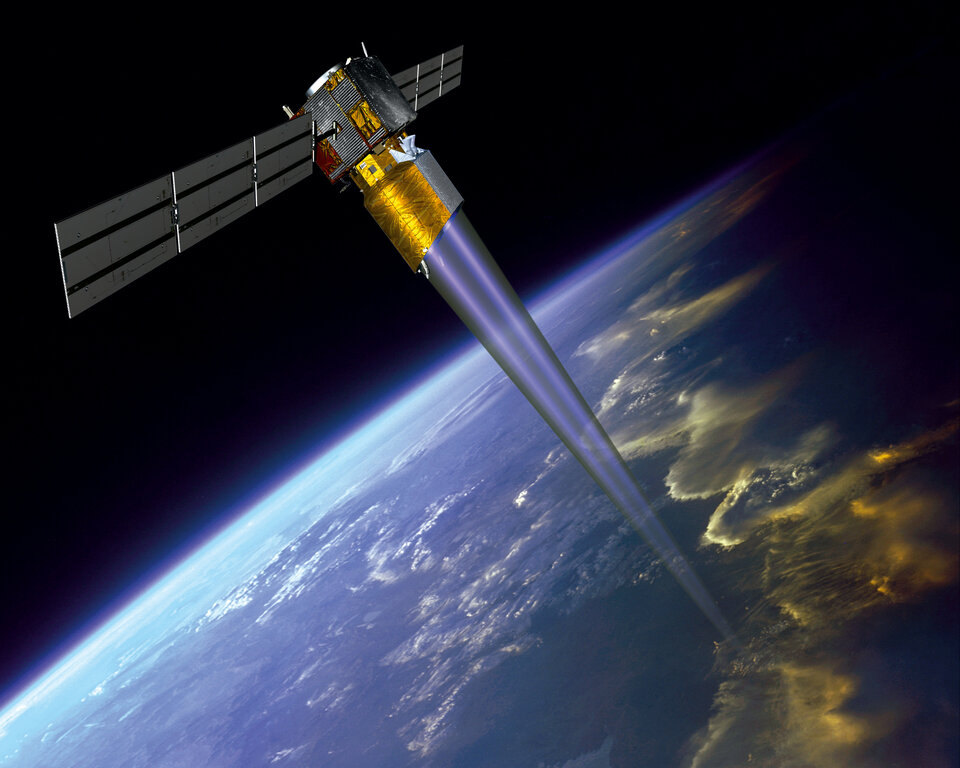
Aeolus will be the first-ever satellite to directly observe wind profiles from space on a global scale and is expected to result in a breakthrough in weather prediction. It is envisaged that Aeolus will be the forerunner of a series of similar operational meteorological satellites in the future.


